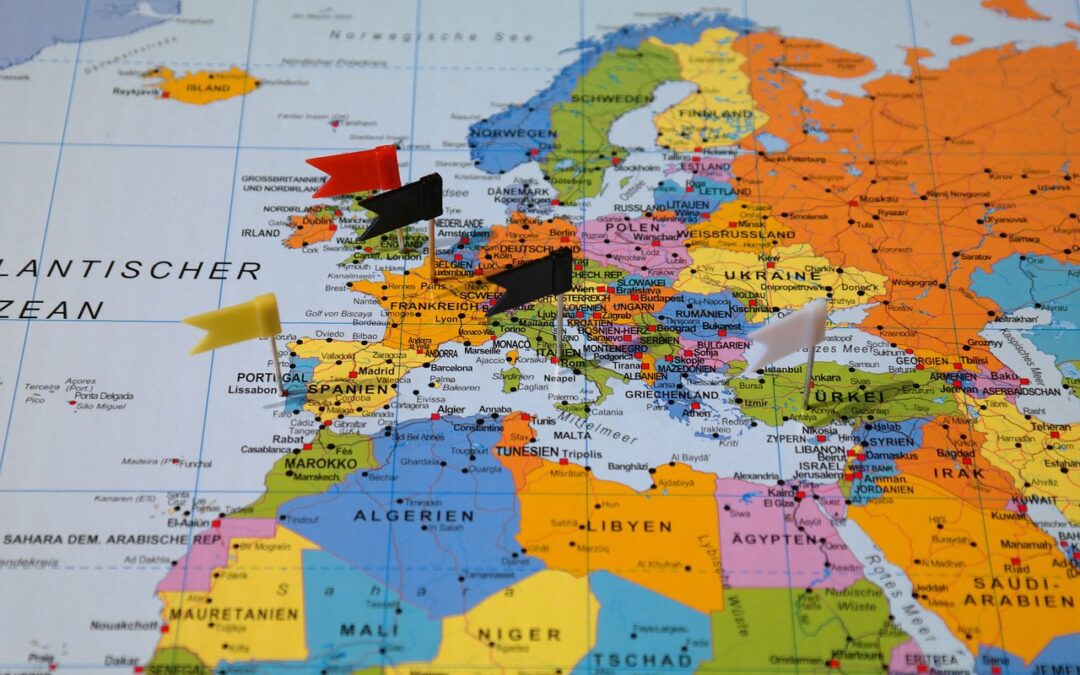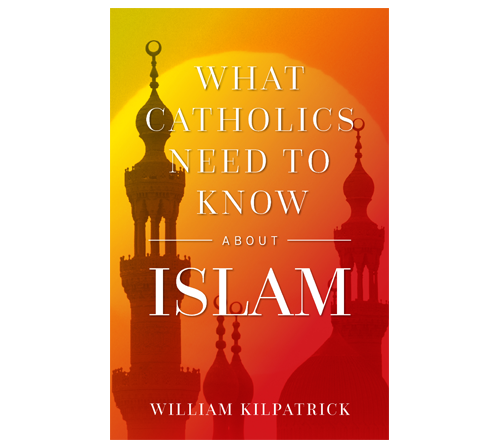This is not another Pope Francis-is-a-threat-to-the-Faith piece. I’ve written a number of articles on that subject in recent months. No, this is a Pope Francis-is-a-threat-to-world-peace piece.
How so?
Well, in two main ways. First, by lending moral support to revolutionary and violent ideologies. Second, by encouraging policies that lead to conflict while discouraging policies that help to prevent it.
But since there’s not enough space here to discuss all of his reckless intrusions into world affairs, let’s focus on just one example—namely, his uninformed pontificating about the divisiveness of borders.
As is well-known, Francis is a strong advocate of open-borders. He subscribes to the idea that borders are an obstacle to peace: they divide people and prevent them from getting to know and understand each other. Therefore, according to Francis and, perhaps, the vast majority of Catholic prelates, borders should come down.
Some recent history suggests that borderless societies can work—at least for a while but only under certain conditions. In 1985 five European nations signed the Schengen Agreement which reduced or eliminated, internal border controls and border checks. Since then, the Schengen area has expanded to 27 European countries.
What Francis and other Catholic leaders fail to realize, however, is that borderless regions are only feasible when the countries involved share similar cultural ideas and values. A border between Spain and Portugal might seem unnecessary, but a “border” between Spain and Morocco seems like a good idea—at least to people who know something about cultural differences.
Not surprisingly, in 2016 seven Schengen countries temporarily reintroduced border controls in response to the European migrant crisis—the mass migration into Europe of millions of people coming mostly from Muslim countries. European leaders needed a way to slow the migration and the many problems that came with it.
Interestingly, Portugal reintroduced border checks with Spain from May 10th to May 14th, 2017 during Pope Francis’ visit to Fatima, Portugal. Perhaps the Portuguese officials feared that Muslims might target the pope in revenge for the Reconquista—the retaking of Spain from its Muslim conquerors by Spanish Catholics. Many Muslims have a long memory and many believe that Al Andalus (Spain) still belongs to them.
Unfortunately, Pope Francis seems blissfully unaware of cultural differences. He seems to believe that all cultures and all religions share the same basic values and beliefs. In “Evangelii Gaudium,” for example, he states that “authentic Islam and a proper reading of the Koran are opposed to every form of violence.” From this perspective, there’s nothing to fear from Islam, and no reason to build walls since, except for a handful of “misunderstanders,” Islam is a religion of peace.
The trouble with this perspective, however, is that it’s the perspective of a man who seems to have never read the Koran. Obviously, Francis lives in a kind of cloud cuckoo land in regard to Islam. And it seems that nothing can wake him from his delusion—not even the solid reminder that he sees every day from his window. The massive 40-foot wall which surrounds the Vatican was begun is 846 AD when Pope Leo IV commissioned it in response to Muslim attacks on Rome.
In past times, Catholic popes fought against Islamic aggression. Now, with the blessing of Francis, Church leaders seem far more interested in fighting “Islamophobia”—an irrational fear of Islam.
But what if the supposedly irrational fear is actually a rational fear? What if Christians and other non-Muslims have good reason to fear Islam?
It would seem that they do have good reason. Since the 9/11 attacks there have been numerous large scale jihad attacks against targets all over the world: the massacre at an elementary school in Beslen, Russia, the Fort Hood massacre, the London tube bombing, the Madrid commuter rail bombing, the Mumbai massacre, the Boston Marathon massacre, the San Bernardino massacre, the Manchester concert massacre, the Bataclan theatre massacre in Paris, the truck massacre in Nice, the Brussels Airport bombing, various Christmas Market massacres in France and Germany, the Sri Lanka massacre, the Pulse Nightclub massacre in Orlando, and the daily attacks by Islamic jihadists on Christian villages in Nigeria. One could add the New Year’s Eve sexual assault on over 1,000 women in Cologne, and the rape and prostitution of thousands of English girls by Muslim grooming gangs across the Midlands.
Is it any wonder that people all over the globe live in fear of Islam? Do they all suffer from an irrational phobia? Or are they simply being realistic?
Yet, Pope Francis and his allies in the Church keep insisting that Islam is a religion of peace that has been unjustly maligned. They contend that If only people would tear down the walls and the borders, Muslims and non-Muslims would learn to live together in peace.
This was the message Pope Francis conveyed when he visited the Holy Land in 2014. In an obviously staged “impromptu” photo op, he prayed for four minutes at the border wall separating Israel and the West Bank. Although, the wall had been constructed after several deadly terrorist attacks against Israeli citizens, Francis managed to give the impression that it was built in order to imprison Palestinians. He rested his head on the concrete wall next to two Graffiti signs: “Free Palestine” and “Apartheid Wall.”
At best, the gesture suggested a moral equivalence between Israel and Palestine. But, given Francis’ attraction to liberation theology, it was more likely meant to imply the moral superiority of the Palestinian people.
This, despite the fact that Palestinian children are soaked in anti-Semitism from the moment they are born by teachers, parents and children’s TV. They are taught, moreover, to believe that killing Jews is the highest calling in life that one can aspire to. As an added incentive, the Palestinian government pays a handsome stipend to the families of slain “martyrs.” And, as far as I know, the Vatican has never condemned the “pay-to-slay” program.
Were the walls and fences built with the purpose of oppressing Palestinians or with the purpose of preventing Palestinians from killing Jews?
Now that we’re facing a similar situation on our Southern border, many Americans are coming to the conclusion that walls aren’t such a bad idea. As in Europe, illegal immigration has led to a large spike in violent crime, in drug trafficking, and in sex trafficking.
Yet Francis seems to think that the wall, not criminal activity by those who don’t share American norms and values, is the problem. In a May, 2019 television interview with the Mexican Televisa network, Francis compared President Trump’s proposed border wall with the Berlin wall that the communists had built to imprison East Germans.
Francis insisted that “he who builds walls winds up a prisoner of the walls he builds. Instead, the one who builds bridges makes friends, gives a hand” …and practices “dialogue.”
He has the same message for Europeans, a majority of whom now want an end to Muslim migration into the continent. He sees Europeans as heartless xenophobes whose supposedly restrictive immigration policies have turned the Mediterranean into the “world’s largest graveyard.” Europeans, by contrast see external border controls as an act of self-defense against people who have no intention of assimilating to European values.
But Francis seems simply incapable of grasping that side of the argument. He continues to cling to naïve ideas about the benefits of diversity and multiculturalism while obstinately refusing to consider other points of view.
One wishes that someone would remind him of Chesterton’s observation (possibly based on an African proverb) that one shouldn’t tear down a fence until he understands why it was put up in the first place.
In wanting to tear down all the borders, Francis exhibits very little imagination about the possible negative consequences, even though the evidence is all around him.
Although he champions open borders, he has built a wall around himself—a sealed mental barricade into which reality rarely penetrates.
Pictured above: Map of Europe, North Africa and the Middle East.
Picture credit: Pixabay


